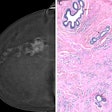It might seem reasonable to teach women about breast disease right after they've undergone biopsy of a suspicious lesion. But the procedure is too stressful to provide a conducive learning environment, say researchers, who suggest putting off the pedagogy for a few days.
"The time of biopsy may not be optimal for presenting complex educational material," said Dr. Wendy Rubinstein in a presentation at the San Antonio Breast Cancer Symposium in Texas earlier this month. Rubinstein is the director of the Cancer Genetics Program at the University of Pittsburgh School of Medicine.
"Breast biopsy is an anxiety-producing event for most women. However, studies have shown that moderate anxiety can be a motivating factor in assuming proactive health behaviors, such as screening and surveillance," she said.
But the research team at the Comprehensive Breast Program of the University of Pittsburgh Cancer Institute and Magee-Womens Hospital determined that anxiety levels might be too high for these women. In analyzing standard psychological assessments of mood, Rubinstein said information on risks may exacerbate a patient's anxiety and impair cognitive processing.
In the study, Rubinstein and her colleagues asked 100 consecutive women who were undergoing fine-needle aspiration, core, and stereotactic biopsies to complete two psychological tests immediately after their procedures: The Profile of Mood States (POMS) measures immediate mood states; the Impact of Events Scale (IES) is a clinical questionnaire that gauges post-traumatic stress.
The patients also completed questionnaires measuring breast cancer knowledge and attitudes. Finally, their breast cancer risk was assessed.
The women ranged in age from 20 to 69, although 43% were in the 40-49 age bracket. Nearly all the women were white, and 71% were married. Most had health insurance.
In 53% of the cases, the patients' calculated breast cancer risk was equal to or greater than twice the general population risk, based on the Gail model of breast cancer risk. About 37% of the women in the study reported that they had a first- or second-degree relative with breast cancer.
The average score on the POMS scale was 16, which was significantly higher than for women undergoing mammography, and even higher than the norms for psychiatric outpatients, the researchers reported.
In addition, the IES scores were similar to those found among patients who had been diagnosed with cancer.
Rubinstein said the study showed that instead of trying to teach women about breast cancer risk at the time of biopsy, a more productive action would be to discuss risk education and counseling at a later date.
When is the appropriate moment? It varies from patient to patient, said lead author Suzanne O'Neill, a doctoral candidate in genetics at the University of Pittsburgh and a certified genetic counselor.
"In the area of breast cancer risk assessment, it is important to inform women about their personal risk factors in ways that encourage proactive health behaviors, without causing undue anxiety." she said. "Most women are not at high risk for breast cancer, and risk assessment for these women may actually be reassuring."
But for those patients who are at an increased risk, "a recommendation for referral in the near future to a specialized high-risk clinic, or cancer genetic counseling service, may be more productive," O'Neill said.
By Edward SusmanAuntMinnie.com staff writer
December 15, 2000
Click here to post your comments about this story. Please include the headline of the article in your message.
Copyright © 2000 AuntMinnie.com



















